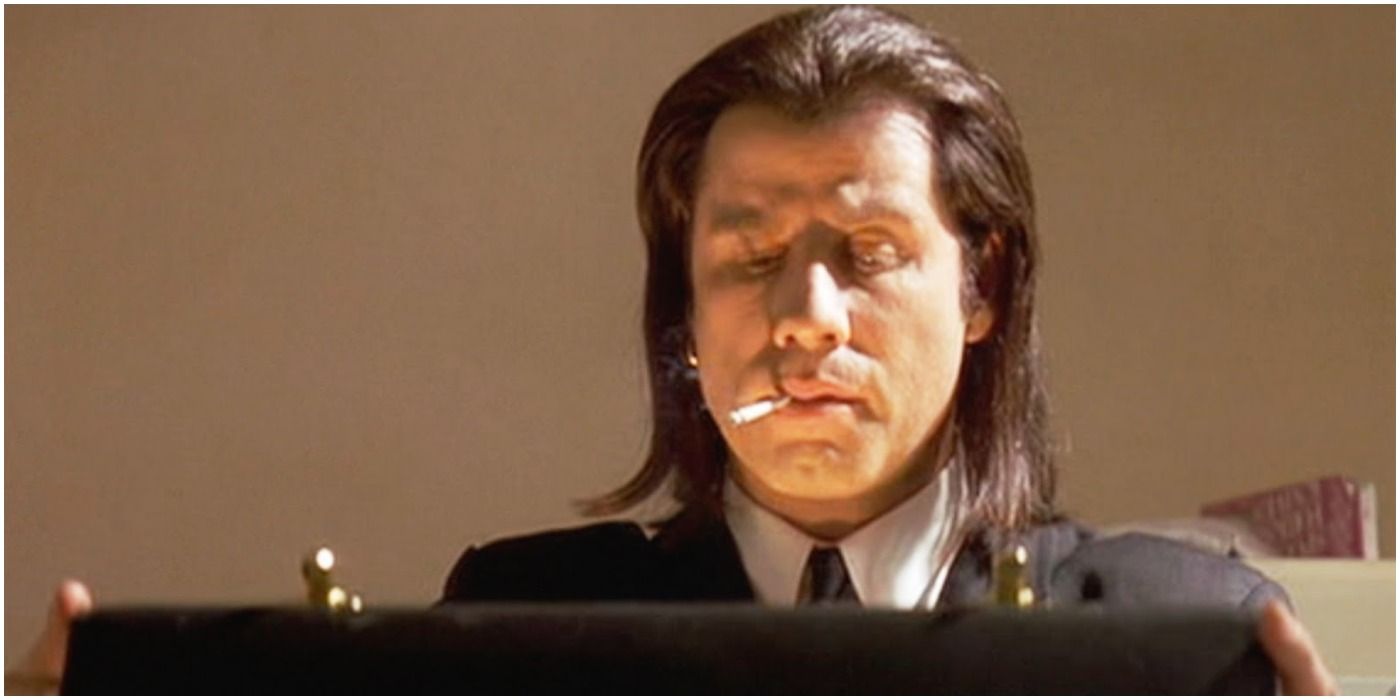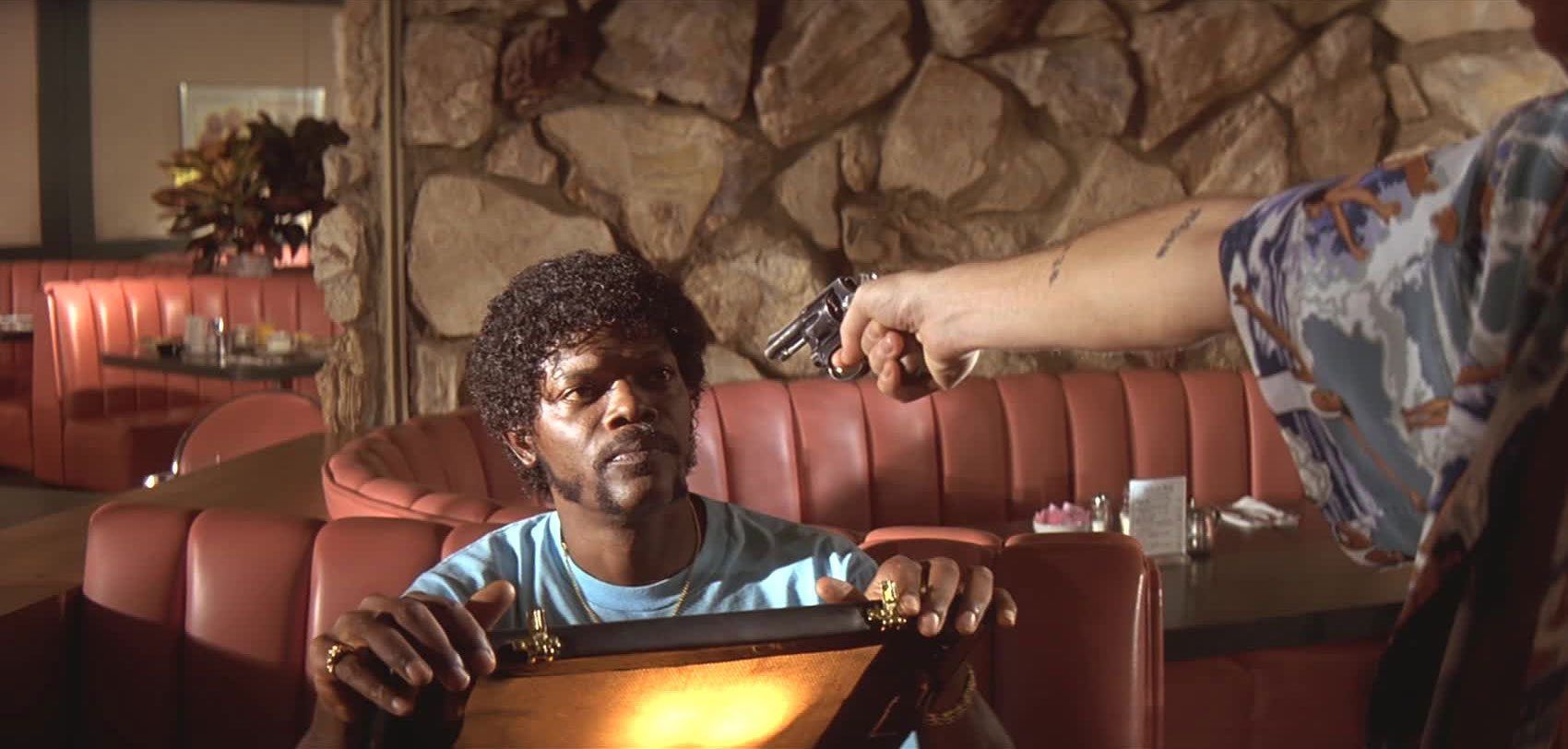It’s become one of cinema’s most tantalizing puzzles: what was in the briefcase that Vincent Vega and Jules Winnfield were seeking in Pulp Fiction? Quentin Tarantino’s narrative-bending crime thriller created a phenomenon and helped define cinema of the 1990s, in part because of its playful post-narrative approach. The meta was impossible to deny – even if the movie’s characters weren’t always aware of it – and the stolen briefcase became a signature piece of this success.
Technically speaking, it’s a MacGuffin, a term coined by Alfred Hitchcock to describe an otherwise irrelevant object in a movie that everyone wants. Prominent examples include the One Ring, the Maltese Falcon and The Ark of the Covenant, along with countless less interesting MacGuffins such as safes full of diamonds or secret plans in a spy film. The nature of the object doesn’t matter, at least in narrative terms. What matters is that all or most of the characters are trying to get it.
Tarantino draws deliberate attention to that by refusing to show the audience what’s in the briefcase. Viewers can never know the definitive answer, simply because the film never reveals it. Hitchcock's lesson proves true, and the contents of the briefcase matter less than the fact that its thieves risked death to nab it, and Jules and Vincent are happy to kill to get it back.
Beyond that, several theories have cropped up, none of them definitive, but most based on hints in both it and other Tarantino movies. Many of them began well before the internet had developed, so pinpointing them is difficult. The most prevalent can be traced all the way back to a Snopes article from 1997, and also carries the most visible evidence with it. It claims that the briefcase contains the soul of Marcellus Wallace, the crime lord who dispatched Jules and Vincent to collect the case.
A number of seemingly incidental details in the film hint at this. The bandage on the back of Marcellus’s neck, for instance, is traditionally a location by which the soul can be removed from a body, while the briefcase’s numerical lock is opened with the code "666," which suggests the involvement of the Devil. Whatever is in the briefcase glows when it is opened – giving it an unearthly sheen – and Jules cites divine intervention as the reason he and Vincent were spared from a hail of bullets while retrieving the briefcase.
Another theory leans more heavily into the meta, and relies on the glow from the briefcase’s contents. It can be traced back to January of 1995 -- when Pulp Fiction was still in theaters -- and a column on the late Roger Ebert's webpage. According to this, Tarantino is referencing a very specific film, 1955’s Kiss Me Deadly, which featured a similarly mysterious box sought by various underworld figures. As with Pulp Fiction, the MacGuffin in that earlier film never truly appears. However, it came from a nuclear bomb site, suggesting that it contains something highly radioactive, and those who open the case and look at it are killed instantly. While the same fate doesn’t befall the character of Pulp Fiction, the visual nod suggests that it contains something radioactive or capable of nuclear power.
Other theories attempt to connect the events of Pulp Fiction to other movies on Tarantino’s resume. This too can be traced back at least to the Ebert column. Tarantino confirmed that all of his films share a universe, which feasibly links Wallace to crimes committed in other movies. Specifically, Reservoir Dogs – the director’s first film and immediate predecessor to Pulp Fiction – concerns a diamond heist gone wrong, and ends with the location of the stolen loot in question. It’s feasible that the diamonds ended up in the briefcase, and that their value was sufficient to send professional hitmen, such as Jules and Vincent, to reacquire them. However, beyond Tarantino’s comments and the general visual style, no visual evidence connects either film directly.
The constant guessing game allows those theories and others to endure, which is part of what keeps Pulp Fiction a fresh experience after almost 30 years. Barring a sequel, the answer will never come, which gives almost any idea possible credence, and thus keeps viewers guessing. While learning what’s in it would likely prove a disappointment, the question turns its ordinary black exterior into one of cinema’s most iconic props.


